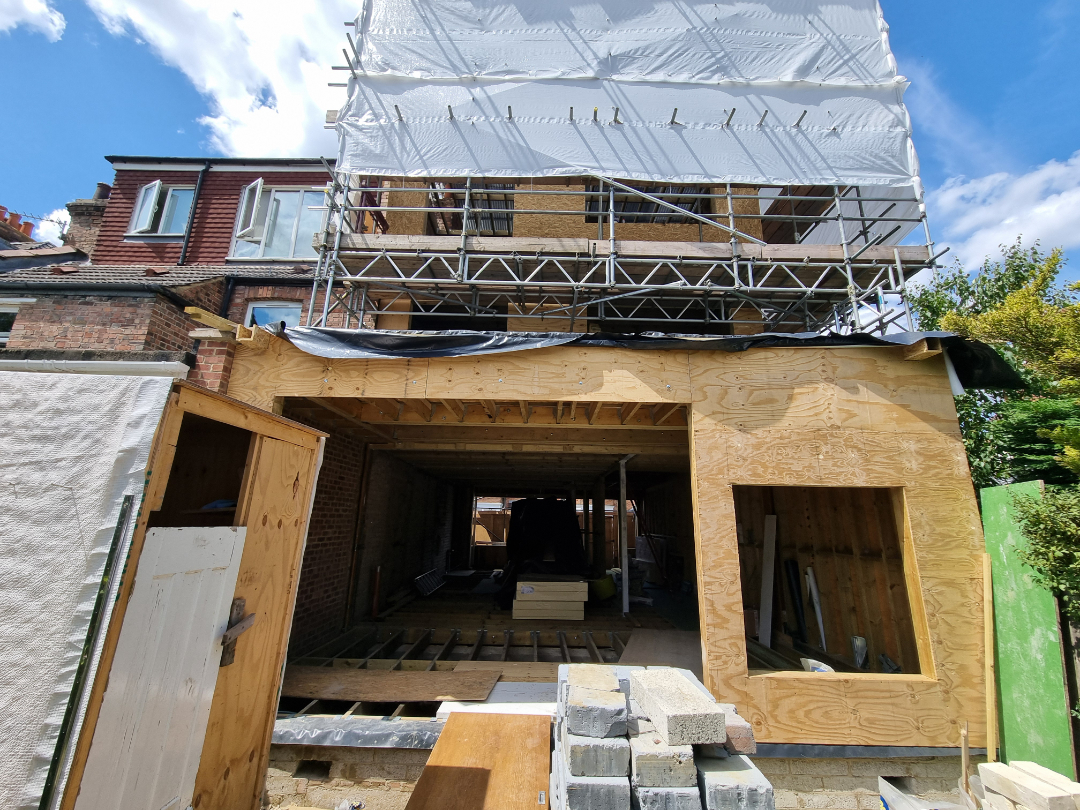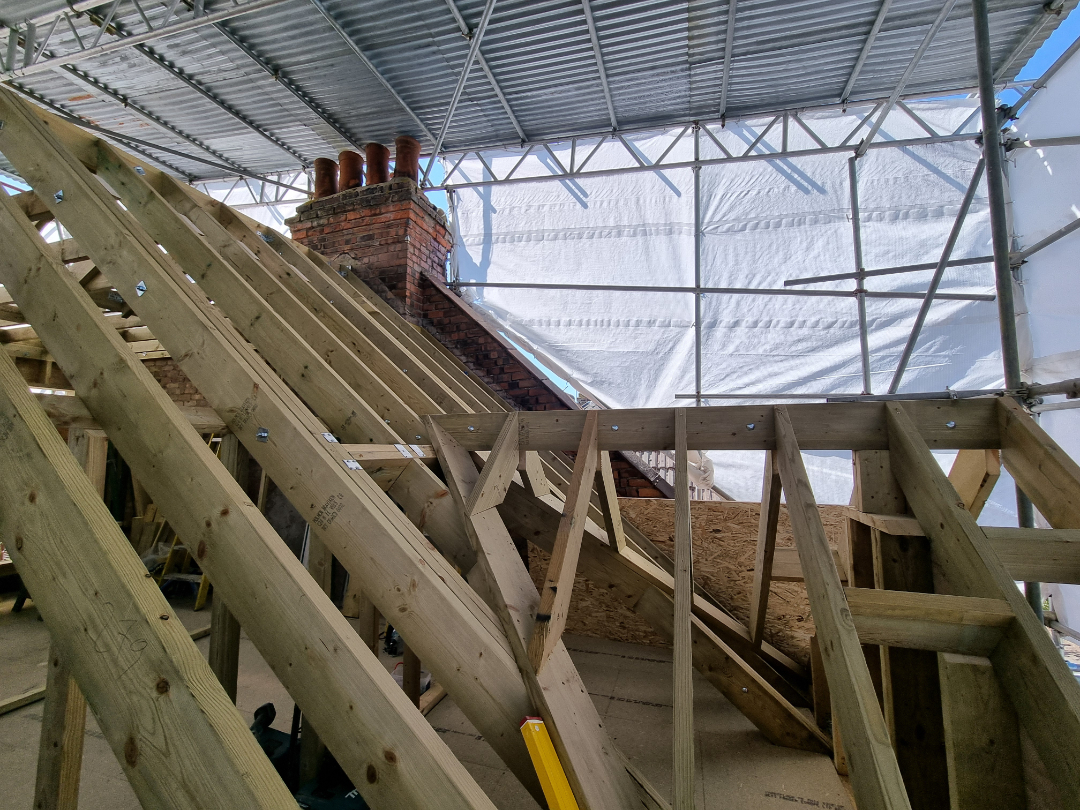Knowledge Base: Do I need a Principal Designer to meet Building Regulations?
< Back to InsightsThe Building Regulations update
In recent years, the UK construction landscape has undergone a significant transformation, particularly with the introduction of the Building Safety Act 2022 and the updates to the Building Regulations 2010, which came into full force in October 2023. These legislative changes were enacted in response to widespread concerns about building safety and accountability, especially in the wake of high-profile incidents that highlighted system failures.
The new laws aren’t just for large-scale developments though, they directly impact domestic clients and private homeowners as well. Whether you’re building an extension, renovating your kitchen, or constructing a new home, you now have legal duties that must be fulfilled.

How is this enforced?
If your project is notifiable i.e. needs Building Control, then they will ask for the Principal Designer at the start of their own involvement. And prior to issuing their final certificate, they will ask the PD – and also the Principal Contractor – to attest to having completed their respective duties.
Who is affected by these changes?
If you’re a homeowner, landlord, or residential property developer, these updates concern you. Some people wrongly assume that building regulations are only relevant for commercial or multi-storey buildings. However, domestic projects now fall squarely within the new regime.
Even small-scale home improvements require the appointment of two key roles:
- A Principal Designer (PD)
- A Principal Contractor
Not doing so can result in non-compliance, legal liabilities, and of course safety risks.
Understanding the role of the Principal Designer (PD)
The Principal Designer is no longer just a title, it’s a legal responsibility.
Under the new rules, the PD is appointed to plan, manage, monitor and co-ordinate matters related to the design work. But their duties don’t stop there. The PD also has to take on the Designers’ duties which is to be satisfied that a design, if built, complies with all relevant requirements of the Building Regulations.
It’s important to note that the PD is not responsible for construction itself. That’s the job of the Principal Contractor. However, if the design changes during construction, someone must reassess and re-certify compliance, and that is usually the PD.
The Principal Contractor vs. Principal Designer
While both roles are essential, they have distinct responsibilities:
- The Principal Designer ensures the design is compliant and well-coordinated
- The Principal Contractor oversees the construction, ensuring it is executed according to design.
Together, these professionals work as a team, but without a PD in place, there’s no one legally responsible for ensuring safe and compliant design.
Legal duties of the client
Previously, homeowners often trusted their builders or architects to handle everything. But the updated legislation clarifies that domestic clients are still legally accountable even if unintentionally.
As the client, you must make suitable arrangements for planning, managing, and monitoring a project so it complies with all relevant requirements on completion. You must take all reasonable steps to appoint designers and contractors with the necessary competence or organisational capability to carry out their roles.
Domestic clients must now:
- Appoint a competent Principal Designer and Principal Contractor in writing
- Ensure these roles are maintained throughout the project
- Cooperate with the team to facilitate compliance
You cannot simply rely on informal agreements or trust. Written appointments and documented responsibilities are legally required.

Retaining the Principal Designer through RIBA Stage 5 (construction)
Construction (RIBA Stage 5) often reveals site realities that require design tweaks, making it particularly important to retain your PD throughout this stage. If no PD is retained:
- Design integrity may be compromised
- Safety and compliance may be at risk
- There’s no one to certify that new design decisions are compliant, leading to the client perhaps unintentionally assuming liability
- The entire project could be delayed or rejected by authorities
Design updates still need certification, and that’s the PD’s job. Keeping them on board protects you and your investment.
Safety, accountability and competence
The principles of the Building Safety Act enforce a culture of safety, accountability, and competence, especially in domestic construction. An effective PD anticipates design risks early, coordinates your consultants (architects, engineers, contractors) and is able to prevent costly, non-compliant decisions.
The safe design delivery of your project is in your hands.
Choosing a competent team
The Principal Designer Building Regulations aren’t just technical updates.They’re a call for greater safety, responsibility, and professionalism in every home project. As a home owner, your best move is to appoint a competent team early and keep them engaged throughout.
Under the Building Safety Act, you must appoint competent professionals. This includes verifying their qualifications, experience and track record of compliance
Your PD should have technical knowledge, communication skills, and a full understanding of the law.
Employing Collective Works as your Principal Designer
At Collective Works, we take our PD role seriously:
- We have attended specialist training about the new regulations and the PD duties
- We understand both design and legal responsibilities
- We stay engaged from concept to completion
- We ensure full compliance and clear documentation
With experience on projects of all sizes, we help domestic clients navigate the new legal landscape with confidence.
Contact us today to learn how we can serve as your trusted Principal Designer.
Let’s have a chat about your vision and
how we can help you realise it.
Collective Works are an architecture & design studio. Our network of professionals will create your perfect solution.